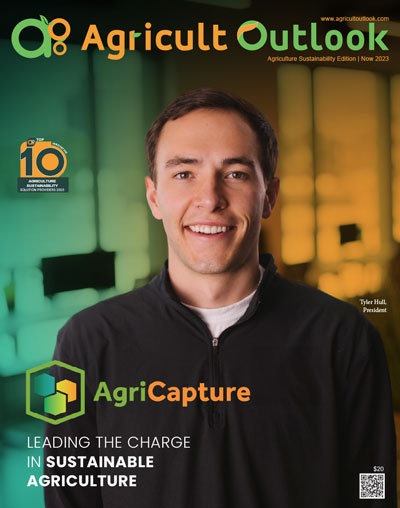Agtonomy, a company specializing in advanced autonomous solutions, has officially launched the first-of-its-kind smart farm task ecosystem, which is designed to digitally and autonomously connect self-driving tractors with farm tools to achieve greater efficiency and sustainability in the field. According to certain reports, the new smart farm task ecosystem will work alongside Agtonomy’s TeleFarmer™ solution, a tele-guidance software and services app, Not just that, it will also look to leverage partnerships with leading equipment manufacturers, including Thiessen Tillage Equipment, OnTarget Spray Systems, KCI Manufacturing and Clemens Technologies, In both the cases, though, the idea is to provide farmers advanced computing, AI-software, and farm-tested hardware that is essential in the context of remotely planning and autonomously executing daily field tasks across orchard, vineyard, berry and specialty crop production.
Talk about the whole value proposition on a slightly deeper level, it begins from a Smart Take Off (STO) functionality where an attached plug connector conceives power and data transfer between the tractor and tool implement attachments. This it does to replace your outdated mechanical power take-off technology. You see, Agtonomy’s STO can seamlessly generate greater power efficiency than its older counterparts, and in case that’s not convincing enough of a pitch for you, the new technology is also a lot safer to use. Next up, we have a Smart Toolbar, which is sensor-enabled and can carry numerous types of smart weeding, mowing, and cultivation tools. Capable of capturing and communicating information between the tractor and tools, this toolbar facilitates real-time response in a three-dimensional performance, such as automatically adjusting tool heights and widths to accommodate for plant spacing and terrain fluctuations. Then, there is the prospect of availing smart implement sensors (SIS) that are to collect data and communicate with the tractor’s autonomous navigation system for the purpose of modulating its speed, power, or other metrics as required. Markedly enough, users can place SIS directly on existing implements, or an alternative can be to place it on the tractor itself. Rounding up the highlights is the new ecosystem’s promise to deliver at our disposal an assortment of smart sprayers, sprayers that can communicate with data sources so to adjust application rates and spot needs. Such a setup also empowers us big time to reduce or increase spray rates as the tractor moves, based on computer vision-collected data such as canopy density, weed pressure, or disease hotspots.
“For autonomy to bring value to agriculture, we must think about tractors and farm tools like farmers do. Together,” said Tim Bucher, CEO and co-founder of Agtonomy. “While other companies have designed individual components of farm robotics, either self-driving tractors or autonomous implements, Agtonomy has connected the digital dots between machines to seamlessly and autonomously execute tasks while keeping farmers in control.”
The development in question follows up on Agtonomy’s recent efforts towards scaling agricultural autonomy and robotic solutions. For instance, in January only, the company collaborated with Doosan Bobcat to launch an Agtonomy software-embedded electrified autonomous tractor. Before that, Agtonomy had also worked alongside OnTarget to launch an all-electric autonomous electrostatic smart sprayer in September last year.




